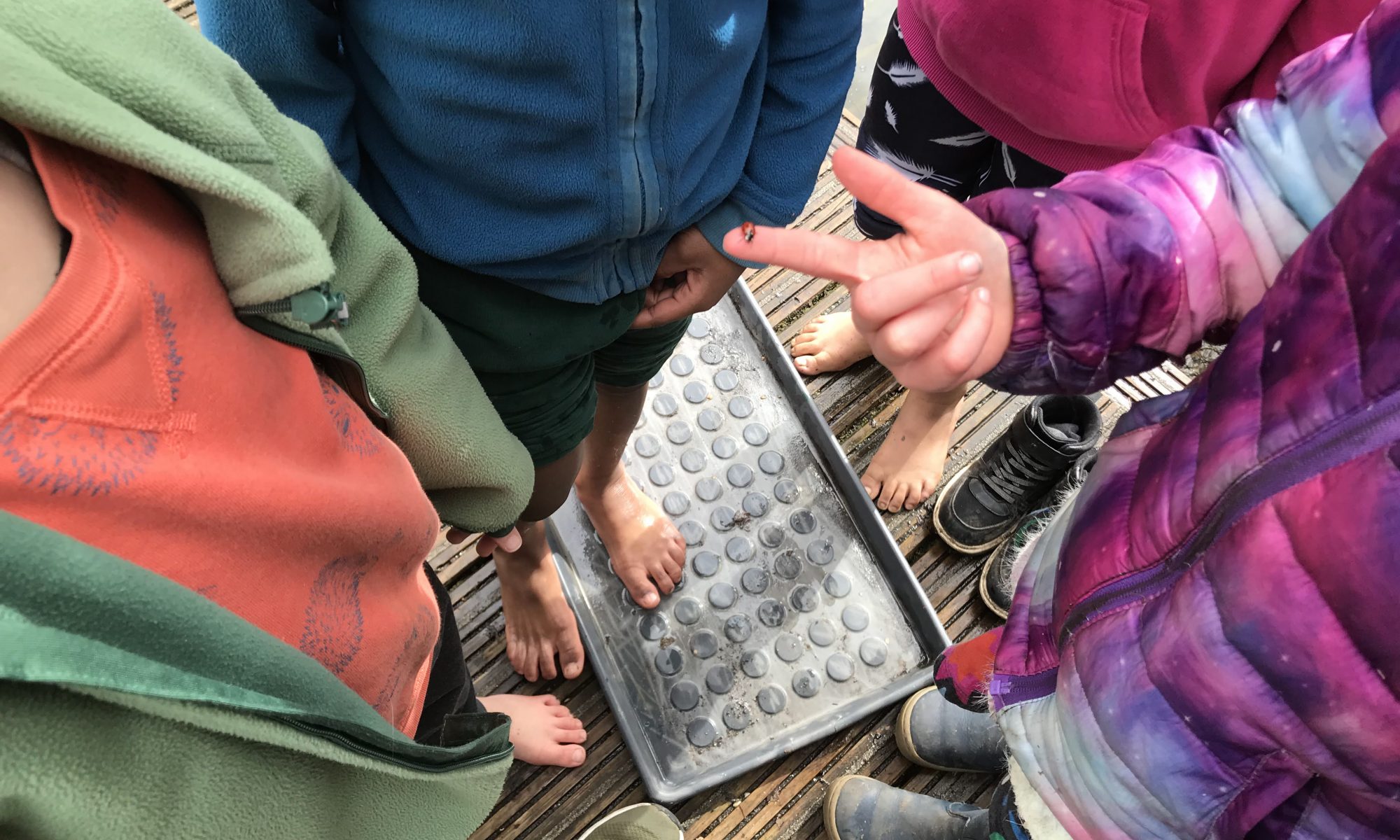Free we Grow is inspired by the idea that the best way to learn and grow is in the real world, and hence we have adopted a structure which reflects the spaces where any human will spend their life – namely at home, visiting, hosting, and collaborating. These spaces are not fixed in place and time but are fluid and interweave.
The Home Space
People spend time at home. Home feels familiar and safe, where you have the time and space to explore your interests, and where you have clear and direct agency in shaping your immediate environment and the agreements that bind you with those you share a home with.
At Free We Grow, Dacres Wood is our home space. The woodland, pond and outdoor space forms an integral part of what happens in the home space and how the children use their time. This includes observing, playing, exploring, climbing, building, running, making, doing and being. The children also have free flow access to the indoor space where they can use a growing array of resources including arts and crafts materials, books, games, construction materials, woodworking tools, science lab kits and a basic kitchen.
In the home space children decide how they want to spend their time. On a day to day basis this takes the form of play and individual or group activities. Facilitators and children can make offerings for home space activities. During the daily meeting, children share their plans for the day to invite collaboration, or ask for help if needed. The meeting is also the forum in which our rules of engagement are established and where issues are discussed. It is an active forum where our culture is formed and where the children are the leading agents in its formation. At the meeting, decisions are made by consent using a tool called ‘roundspeak’. Ad-hoc issues which emerge during the day are resolved through talking and mediation.
The Visiting Space
When we’re not at home, we’re out; and being out in the world we come into contact with other people, places and environments, things, knowledge and ideas. The visiting space is inspired by the idea of pilgrimage, where people walk away from what they know to discover something new. Leaving Dacres Wood and spending time in the neighborhood, visiting local amenities, exploring the local environment, and going further out into London and beyond, is a key part of life at Free We Grow and enriches our emergent curriculum. Children and facilitators can propose forays. Visiting places within walking distance of Dacres Wood can happen on an ad hoc basis, and we usually also organize at least one bigger visit per half term. Visits relate to children’s interests or can be proposed by other members of the community and can include visiting other nature reserves, museums, libraries, parks and even friends’ houses!
The Hosting Space
As we go out into the world, we also receive! At Free We Grow, hosting guests forms part of our culture. The children can invite family members and friends and we also seek to invite visitors who can share their passions and interests with the children. Occasionally, when children’s interests are technically specific, we reach out to our community to see if friends are able to support the children with their enquiries. Examples of this have included learning how to box, how to do architectural drawings, or how to build a brick wall. As we are based in a nature reserve there are also many reasons why people may want to visit for their own interests. Hence we aim to embrace these genuine interests by hosting artists, ecologists, conservation volunteers and people interested in how Free We Grow functions. As hosting can have an impact on the stability of the home culture, this space is developed gradually and always consensually.
The Buzz Space
The Buzz Space is the space for collaboration. It is an intentional space designed to facilitate interest driven group or whole community projects. A buzz project can be initiated by a conversation between two community members, who decide to bring an idea to the meeting, propose a project, and find collaborators with whom to work. For example, when the idea to have an end of year show was suggested at a meeting and agreed, a Buzz board was created through which the program was arranged, the roles were allocated and the logistics were managed. Or when the cost of a proposed trip was prohibitive, the children together organized a stall, prepared crafts and snacks to sell and raised over half the cost of the trip, allowing it to take place. Sometimes the children become interested in a theme or topic, and regular classes can be arranged via the buzz space. For example, weekly first aid lessons and Arabic classes and lunchtime history and philosophy sessions have been organized through the Buzz space.

